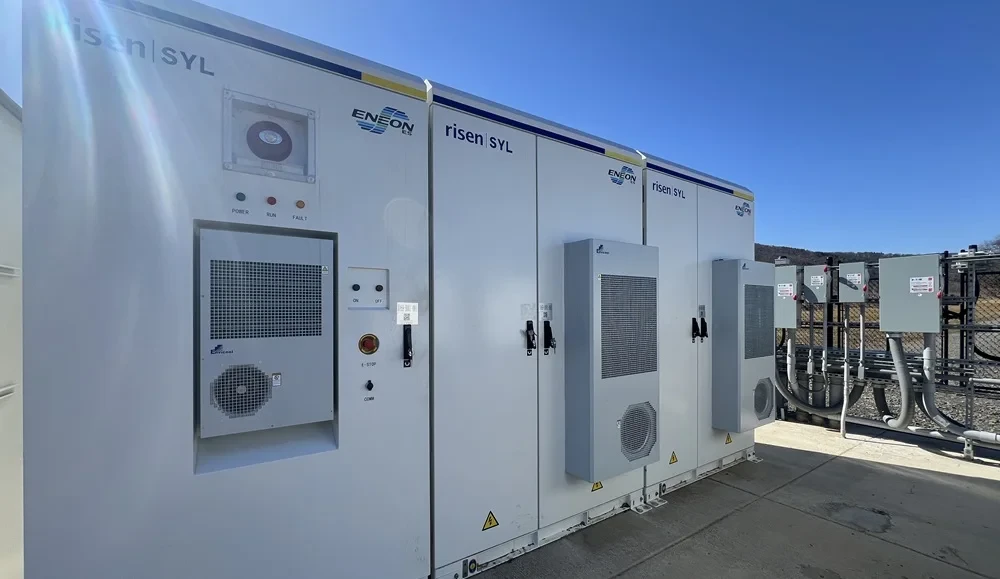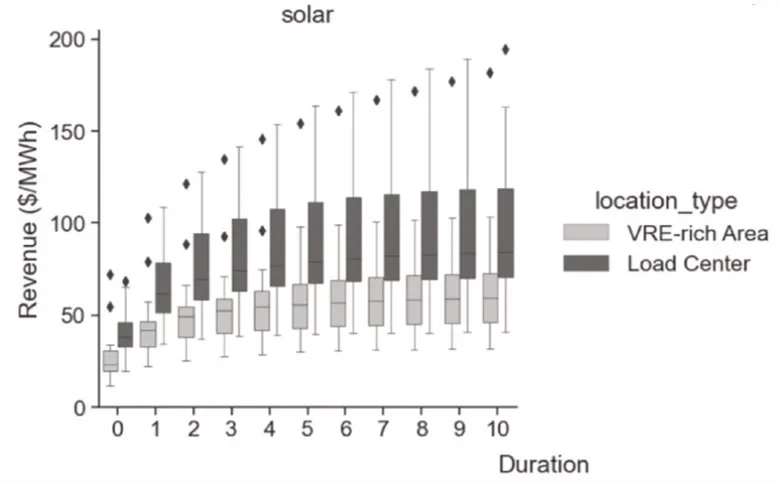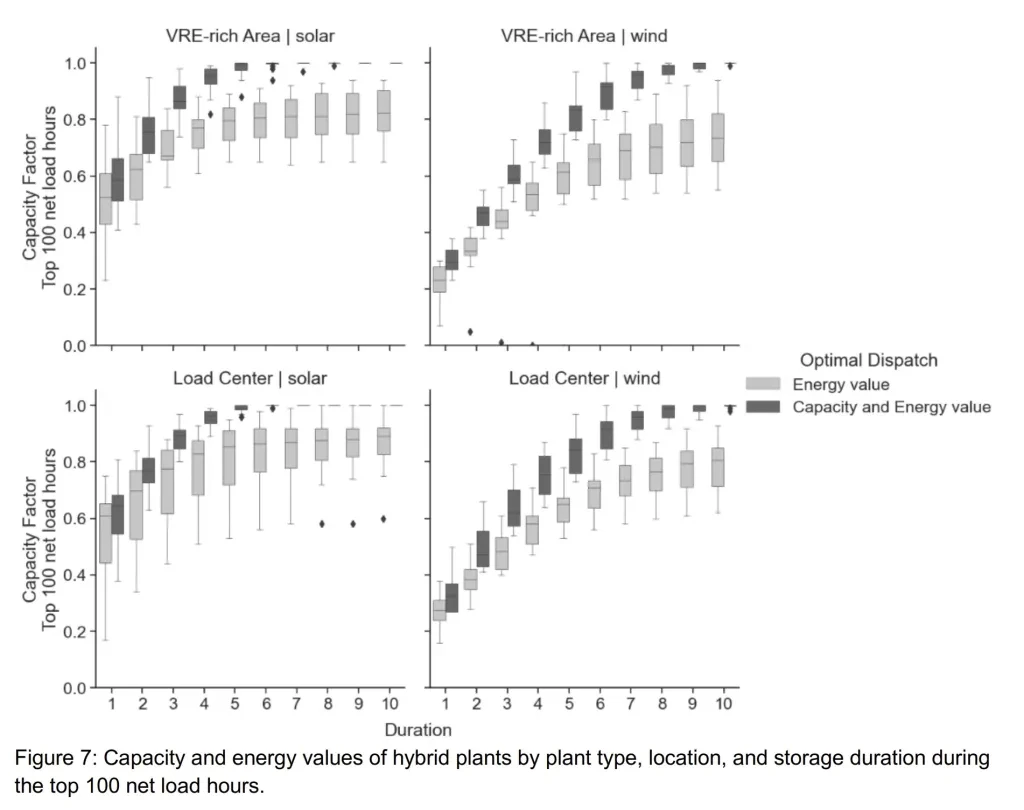One to four hours of battery storage for a solar power facility can significantly increase site revenue in areas with high population density or abundant solar energy. However, the added value diminishes with storage capacities exceeding four hours.

Tioga Downs Energy Storage System
Image: Commercial Solar Guy
From pv magazine USA
Power grid queues are increasingly dominated by solar power projects, with a significant portion involving solar-plus-storage (hybrid) facilities. In recent years, the ancillary markets in Texas and California’s evening peak demand have been the primary targets for battery investments.
As these markets grow more competitive and battery costs continue to drop, developers are exploring new opportunities to maximize value, such as retrofitting existing solar power plants. Industry leaders like NextEra and BayWa re have indicated that retrofits will be a key revenue driver moving forward.

As expected, the study found that solar-plus-storage power plants located near high-demand areas, which face constraints in building new capacity and experience higher energy prices, could achieve significant revenue increases. Additionally, regions with abundant variable renewable energy (VRE), such as solar and wind, also benefited from adding short-duration battery storage.
In Texas, for example, battery storage is typically sized for one-hour capacity, while in California, it averages around four hours.
In modeling scenarios with increasing amounts of energy storage paired with solar facilities, the researchers observed notable differences. Solar plants in load center regions saw substantial revenue gains, while VRE-rich regions showed higher percentage increases. This reflects the higher energy costs in load centers, as opposed to VRE-dominated areas where prices are often suppressed, yet large “duck curve” opportunities are present.
The most significant percentage increase in revenue per kilowatt-hour came from adding an initial one-hour battery upgrade.
In load centers, converting standalone plants to solar-plus-storage with one-hour storage increased the value of those plants by 48.8%, from $33.8/MWh to $50.3/MWh. In VRE-rich Areas, this trend was even more pronounced: one-hour batteries increased solar and wind plants’ median values by 80.5% and 81.1%, respectively.
The EMP study includes a key caveat: The revenue model assumes “perfect foresight,” an ideal scenario where solar-plus-storage plant operators can perfectly predict the best times to store and release energy. In reality, operators face uncertainty in determining the optimal charging and discharging periods.
The discovery that beyond four hours of storage offered minimal additional revenue came as a surprise to the researchers. According to the study, “the [revenue per kilowatt-hour] increase from five to eight hours of duration was much smaller (7.3% and 6.1% for solar and wind, respectively).”

Another notable finding was that retrofitting a solar power plant with energy storage significantly increased its likelihood of generating electricity during the “top 100 net load hours” of the year, from as low as 20% with one hour of storage to as high as 100% with five or more hours of storage.
The authors also weighed the trade-offs between maximizing battery longevity and optimizing for short-term revenue, noting that “more sophisticated treatment of battery degradation may allow for greater value maximization for solar-plus-storage power plant owners.” Across different battery degradation models, revenue varied by up to 18%.
With recent advances in battery longevity, such as “five years of zero degradation” costs, the revenue potential for these facilities would further increase.
Lower degradation rates also create new revenue opportunities by allowing facilities to charge from the power grid at lower rates during non-solar hours. This capability, now permitted under the US Inflation Reduction Act, adds an estimated $0.012/kWh in revenue opportunity.
This content is protected by copyright and may not be reused. If you want to cooperate with us and would like to reuse some of our content, please contact: editors@pv-magazine.com.
Source from pv magazine
Disclaimer: The information set forth above is provided by pv-magazine.com independently of Alibaba.com. Alibaba.com makes no representation and warranties as to the quality and reliability of the seller and products. Alibaba.com expressly disclaims any liability for breaches pertaining to the copyright of content.




